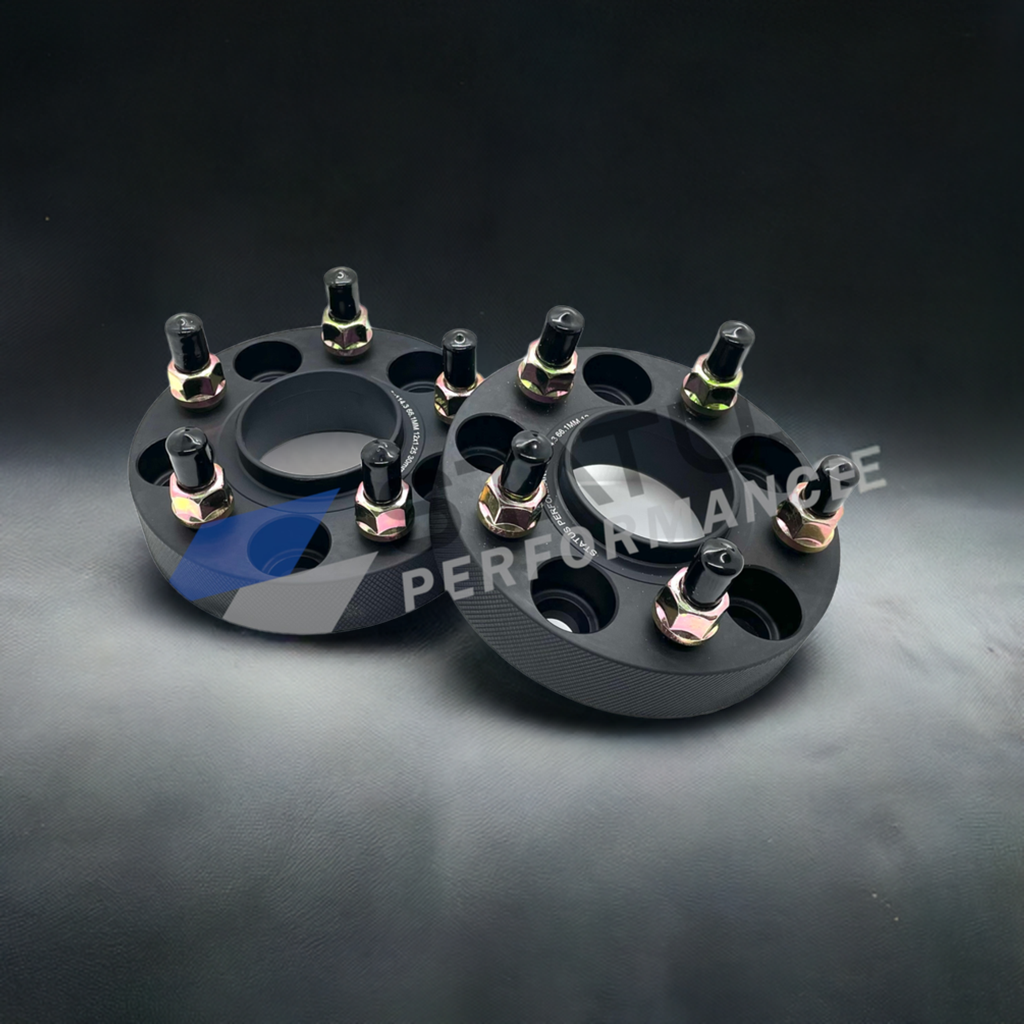
Are Wheel Spacers Safe and Legal?
Share
Are Wheel Spacers Safe?
In terms of safety ... YES and NO
There are multiple factors that can make wheel spacers perfectly safe, and allow you to drive on them all day, every day - on a daily driver, on a track car, on a Sunday cruiser etc. Its all in the preparation before purchasing said Wheel Spacers and proper installation, follow these steps and there are no downside to wheel spacers. All of my points below pertain to BOLT ON wheel spacers, slip on style are a whole different discussion.
1. Ensure you are buying a QUALITY BUILT spacer.
There are a lot of cheap spacers on the market that are low quality material - this can be hard to source out, however I will say that manufacturing techniques, and materials have come a long way over the past 10 years, and failures are typically not caused to poor quality materials.
2. Buy HUBCENTRIC Wheel Spacers.
The biggest mistake I see, if people aimlessly choosing a wheel spacer thinking they're universal. Wheel spacers need to be the proper size to fit your vehicle. Match the hub bore (or center bore), as well as the thread pitch on the hardware of the vehicle - two VERY IMPORTANT factors.
3. Make sure they are INSTALLED CORRECTLY - see the common issues below:
- First off, when installing the spacer you need to ensure the spacer sits flush on the hub of the vehicle. If the spacer doesn't sit flush, your hub bore is incorrect, there is corrasion build up that needs to be cleaned off, or there is a foreign object in the way. Any of these situations can cause catastrophic failure.
- Secondly, make sure you anti-seize the hub and/or back of the wheel spacer for future removal - this will save you a headache down the road.
- Anti-seize the factory lug nuts, and torque down to the appropriate torque rating - suggestion is factory torque spec. If you're worried about having them loosen up over time, don't be afraid to add a small drop of BLUE LOCKTITE, or any removable thread locker.
- Ensure your wheel fits FLUSH onto the hub of the spacer. I've seen countless installs where the wheel sits on the factory studs that poke through the wheel spacer, this causes unnecessary stress on the spacer, and will cause vibration and again - ultimately lead to catastrophic failure.
4. Ensure to torque your wheels
Torque your wheels to the appropriate rating, typically 80-90 ft/lbs, (Depending on spacer and vehicle), and RETORQUE wheels after 150km/100miles of driving.
If you follow these 4 rules, you will undoubtedly have no issues running wheel spacers. Just make sure you're not too thick of a wheel spacer, make sure you have fender clearance and most importantly, be safe!
Are Wheel Spacers Legal?
Yes, wheel spacers are legal in most places, but the legality depends on the region and whether they are used correctly. It's essential to follow local laws and regulations when installing them. That being said, local inspection offices do have the authority to say otherwise.
Wheel spacers must be installed safely and properly, using high-quality products that meet industry standards. Poorly manufactured or improperly installed spacers can cause safety issues, which might result in the vehicle being deemed unsafe or non-compliant during inspections.
For example:
- In Canada and the United States, wheel spacers are generally legal as long as they do not cause the vehicle to exceed the maximum allowable width or interfere with safety requirements (like tire clearance and brake function).
To stay on the right side of the law and ensure safety, you should:
- Use spacers that match your vehicle's specifications.
- Ensure proper installation by following the manufacturer's guidelines or consulting a professional.
- Verify that using spacers won't negatively affect your vehicle’s handling, stability, or tire clearance.
For those considering wheel spacers for aesthetics or performance, it’s critical to choose high-quality, tested spacers, like those offered by Status Performance Ltd, which prioritize safety and durability.
